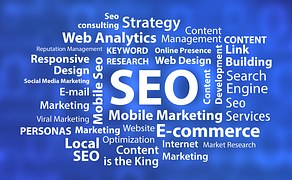How Much Should I Spend on My Business’ Online Presence?
The easy answer to this question is: “As much as necessary and as little as possible.” But, of course that’s the easy answer and in business, there are no easy answers. Some experts suggest that you allocate 15 to 20 percent of your company’s annual income for the best results, but that answer is also a little too facile.
You know that you’re going to spend something for your business’ online presence and you know that it’s probably going to more affordable than print ads, radio or TV commercials, or sending out actual mail. But what you really need to do before you spend a dime, is decide what you want to achieve, where you will find most of your customers, and what aspects of online advertising and communication will give you the biggest bang for the buck by generating leads and sales and directing people towards your company.
Generally, you will have several main choices for your online spending: a website, which requires building it, hosting it and maintaining it; search marketing, such as Search Engine Optimization (SEO), digital ads such as Google AdWords, pay per click (PPC) campaigns, etc.; a social media presence, such as Facebook, Twitter, and all the other various platforms; review site advertising such as Yelp and Foursquare; and email communication.
The most important of these is probably your website. There you have some choices. You can build it yourself using any number of off-the-shelf templates, such as WordPress, or you can pay to have one constructed for you. Your other basic costs will include a web domain, web hosting, a web developer (if your platform needs specific functionalities that are not available as plugins or extensions), and perhaps a social media manager (if you don’t have the time or the knowledge of how to manage the different channels). And remember: as the world becomes increasingly mobile-centered, it’s best to have a website that will display properly on smart phones and tablets.
Paying for SEO is another essential cost for many businesses. There are several models in play. You can pay a monthly retainer, which is a set fee each month in exchange for an agreed-upon array of services; or you can contract for services at fixed prices. Two other options are project-based pricing and hourly consulting.
Of course, you need to be on Facebook. It costs nothing, unless you wish to pay for boosting your content. The main expense is in labor. Facebook pages need to be updated constantly. In many companies, it’s a full-time job.
Sites like Yelp and Foursquare that offer customer reviews are also helpful tools for directing customers to your business through their advertising options. Most (non-PPC) advertising is priced on a CPM basis – essentially the cost per thousand impressions. You will have to do a lot of number-crunching to determine if this option will net you a decent return on your investment.
Finally, email marketing can be the centerpiece of any effort to stay in touch with existing customers, while reaching out and finding new ones. You can use it to promote new items and offer special discounts to loyal customers or to simply keep your customers informed. Blast email programs are relatively inexpensive, but you will need to pay a staff member to keep on top of everything.
Now, once you’ve done a lot of thinking, planning, and budgeting, you can re-ask yourself the question at the top of this post: “How Much Should I Spend on My Business’ Online Presence?” With all of your newly acquired knowledge, however, you will still likely wind up with the same answer: “As much as necessary and as little as possible.” Like we said, in business, there are no easy answers.
 1-844-47-Click (1-844-472-5425)
1-844-47-Click (1-844-472-5425)


